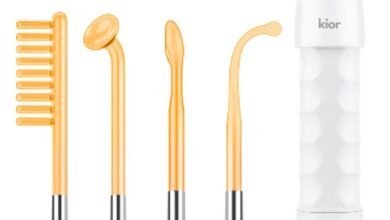Leveraging AI for Predictive Analytics and Investment Analysis: Transforming Data into Strategic Insights

In today’s data-driven world, Artificial Intelligence (AI) has emerged as a transformative force, especially in the realms of predictive analytics and investment analysis. By harnessing the power of AI, businesses and investors can unlock valuable insights, forecast future trends, and make informed decisions that drive growth and profitability. This article delves into the applications, benefits, and future prospects of AI in predictive analytics and investment analysis, illustrating how these technologies are reshaping the landscape of data-driven decision-making.
AI for Predictive Analytics: Anticipating Future Trends
Predictive analytics involves using historical data and statistical algorithms to forecast future outcomes. AI for predictive analytics enhances this process by applying advanced machine learning algorithms to analyze vast amounts of data, uncover patterns, and make accurate predictions.
Applications of AI in Predictive Analytics
1. Sales Forecasting
AI-driven predictive analytics can significantly improve sales forecasting by analyzing historical sales data, market trends, and customer behavior. Machine learning models can identify patterns and predict future sales volumes, helping businesses optimize inventory, manage supply chains, and plan marketing strategies.
2. Customer Churn Prediction
Understanding customer churn is crucial for maintaining a loyal customer base. AI can predict which customers are likely to leave by analyzing engagement patterns, transaction history, and customer feedback. This enables businesses to take proactive measures, such as targeted retention campaigns and personalized offers, to reduce churn rates.
3. Financial Risk Assessment
Predictive analytics powered by AI can assess financial risks by analyzing historical financial data, market conditions, and economic indicators. AI models can forecast potential financial issues, such as credit defaults or investment losses, allowing organizations to implement risk mitigation strategies.
4. Healthcare Predictive Modeling
In healthcare, AI-driven predictive analytics can forecast patient outcomes, disease outbreaks, and treatment responses. By analyzing patient data, medical history, and environmental factors, AI can provide valuable insights that improve patient care and optimize healthcare operations.
Benefits of AI in Predictive Analytics
1. Enhanced Accuracy
AI algorithms can analyze large datasets with high precision, leading to more accurate predictions compared to traditional methods. This accuracy enables businesses to make data-driven decisions with greater confidence.
2. Improved Decision-Making
AI-powered predictive analytics provides actionable insights that support informed decision-making. By forecasting future trends and outcomes, organizations can plan effectively and respond proactively to changing conditions.
3. Increased Efficiency
AI automates the data analysis process, reducing the time and effort required to generate predictions. This efficiency allows organizations to focus on strategic initiatives rather than manual data processing.
4. Competitive Advantage
Organizations that leverage AI for predictive analytics gain a competitive edge by anticipating market trends and customer needs. This foresight enables them to stay ahead of competitors and capitalize on emerging opportunities.
AI for Investment Analysis: Navigating Financial Markets
Investment analysis involves evaluating financial assets and market conditions to make informed investment decisions. AI for investment analysis enhances analysis by providing advanced tools for data analysis, trend forecasting, and risk assessment.
Applications of AI in Investment Analysis
1. Algorithmic Trading
AI-driven algorithmic trading systems use machine learning algorithms to analyze market data and execute trades based on predefined criteria. These systems can process vast amounts of data in real-time, making split-second trading decisions that optimize returns and minimize risks.
2. Portfolio Management
AI tools assist in portfolio management by analyzing investment opportunities, optimizing asset allocation, and managing risk. Machine learning models can evaluate historical performance, market conditions, and investor preferences to create and maintain balanced portfolios.
3. Market Sentiment Analysis
AI-powered sentiment analysis tools can assess market sentiment by analyzing news articles, social media posts, and financial reports. By understanding investor sentiment and market trends, AI can provide insights into potential market movements and investment opportunities.
4. Predictive Analytics for Investment Trends
AI models can forecast investment trends by analyzing historical data, economic indicators, and market conditions. These predictions help investors make informed decisions about asset selection and investment strategies.
Benefits of AI in Investment Analysis
1. Enhanced Accuracy and Precision
AI-driven investment analysis tools provide accurate and precise evaluations of financial assets and market conditions. By analyzing large datasets and complex patterns, AI improves the accuracy of investment predictions and recommendations.
2. Real-Time Analysis
AI systems can process and analyze market data in real-time, providing up-to-date insights and enabling timely investment decisions. This real-time analysis is crucial for navigating volatile financial markets and capitalizing on emerging opportunities.
3. Reduced Human Bias
AI models are designed to minimize human bias by relying on data-driven insights rather than subjective opinions. This objectivity enhances the reliability of investment analysis and reduces the impact of emotional decision-making.
4. Scalability
AI tools can handle vast amounts of data and perform complex analyses at scale. This scalability allows investors to analyze multiple assets, markets, and investment strategies simultaneously, improving overall investment efficiency.
Integrating AI into Predictive Analytics and Investment Analysis: Challenges and Considerations
While AI offers numerous advantages in predictive analytics and investment analysis, organizations must address several challenges:
Data Quality and Availability
AI models rely on high-quality, accurate data for effective predictions and analysis. Ensuring data quality and availability is crucial for achieving reliable results. Organizations must implement robust data management practices to address data quality issues and ensure data integrity.
Algorithm Transparency
AI algorithms can be complex and opaque, making it challenging to understand how predictions and recommendations are generated. Enhancing algorithm transparency and interpretability is essential for building trust and ensuring that AI-driven insights are reliable and actionable.
Integration with Existing Systems
Integrating AI tools with existing predictive analytics and investment analysis systems can be challenging. Organizations must ensure that AI solutions are compatible with their technology infrastructure and that integration does not disrupt existing processes.
Managing AI Bias
AI algorithms can inadvertently introduce biases based on the data they are trained on. Organizations must actively monitor and address potential biases to ensure that AI-driven predictions and analysis are fair and unbiased.
The Future of AI in Predictive Analytics and Investment Analysis
The future of AI in predictive analytics and investment analysis holds exciting possibilities:
1. Advanced Machine Learning Models
Future advancements in machine learning will lead to more sophisticated predictive models and investment analysis tools. These models will offer enhanced accuracy, precision, and capabilities, transforming how organizations and investors analyze data and make decisions.
2. Increased Automation
AI will drive further automation in predictive analytics and investment analysis, handling increasingly complex tasks and processes. This increased automation will improve efficiency and reduce the time required for data analysis and decision-making.
3. Enhanced Data Integration
Future AI solutions will offer improved integration with various data sources, providing a more comprehensive view of predictive analytics and investment analysis. Enhanced data integration will enable more accurate and actionable insights.
4. Greater Personalization
AI will enable greater personalization in predictive analytics and investment analysis by tailoring predictions and recommendations to individual needs and preferences. This personalization will enhance the relevance and effectiveness of AI-driven insights.
Conclusion
AI is revolutionizing predictive analytics and investment analysis, offering powerful tools and insights that transform data into strategic advantages. In predictive analytics, AI enhances accuracy, efficiency, and decision-making by forecasting future trends and outcomes. In investment analysis, AI provides advanced tools for data analysis, trend forecasting, and risk management, enabling informed investment decisions.
As AI technology continues to advance, its impact on predictive analytics and investment analysis will become even more profound. By addressing challenges and embracing the future of AI, organizations and investors can leverage these technologies to gain a competitive edge, optimize performance, and achieve greater success in an increasingly complex and dynamic environment.





